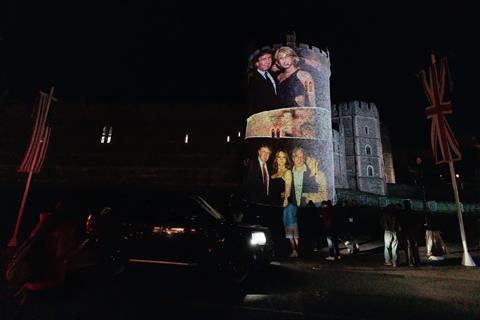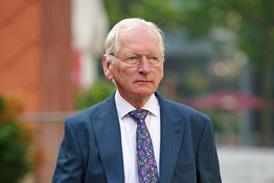As widely publicised in the media last month, four individuals were arrested after images of Donald Trump and Jeffrey Epstein were projected on to Windsor Castle (pictured). The footage of Trump and Epstein – a notorious financier who died in custody in 2019 – was seen projected on to an external castle wall, along with quotes and headlines about their relationship.

The four were held on suspicion of a number of offences, including malicious communications and public nuisance, over the projection of the US president and the late convicted sex offender ahead of the state visit to the UK.
While some commentators have welcomed the forceful action of the police, others hit back against the arrests, calling the police response ‘Orwellian’ and ‘heavy-handed’ in the context of journalism and the right to free speech.

What are malicious communications?
While most people are familiar with the concept of public nuisance, this incident has thrown a spotlight on to a little-known piece of legislation known as the Malicious Communications Act 1998 (MCA).
The MCA was designed to criminalise sending offensive, threatening or false communications intended to cause distress or anxiety. It originally applied to letters and physical communications but has since been extended to cover electronic communications.
A person commits a criminal offence under the MCA if they send to another person a letter, electronic communication or article of any description which is indecent or grossly offensive. The mental element of this offence is the intention to cause distress or anxiety to the recipient or any other person to whom the sender intends it to be communicated. The offence is triable either way, with sentencing options including up to two years’ imprisonment or a fine, or both if convicted on indictment.
Case law in this area dictates that the communication must be grossly offensive or of an indecent, obscene or menacing character. The bar for what constitutes this type of behaviour is typically high.
Even where an offence pursuant to the MCA is made out, the Crown Prosecution Service guidance makes it clear that it will rarely be in the public interest to bring a prosecution, given the potential impact on free speech. The guidance has particular regard to the right to freedom of expression under Article 10 of the European Convention on Human Rights. The protection afforded to individuals under Article 10 extends to communications that ‘offend, shock and disturb’.
An unlikely but powerful lever
While there are significant challenges to bringing a successful prosecution pursuant to the MCA, the Trump/Epstein saga serves as a useful reminder that it remains a powerful lever for the police to activate should the need arise.
Thames Valley Police said the men have been released on conditional bail until 12 December while the investigation continues. Whether or not the arrests will result in successful prosecution remains unclear.
On the face of it, the ‘electronic communication’ complained of is arguably neither indecent nor grossly offensive; it is merely a photograph of two people next to each other (albeit undoubtedly with an innuendo meaning that can be derived from the surrounding context).
This case is also unique in that the ‘communication’ in question is a projection; the judge will have to decide whether a projection on to a wall counts as a communication within the scope of the MCA. Given that the language (and current application) of the MCA appears to capture communications sent between individuals, it will be interesting to see whether the scope is widened to capture public incidents of this nature.
Precedent-setting case?
There are various aspects of this case that could guide similar cases.
Since the projection lands on another’s wall, future cases may involve issues such as implied consent, nuisance, or symbolic trespass. If courts criminalise it, they might effectively expand ‘use of property without consent’ into the communications arena.
There is also the question of free expression versus public order. If courts treat projections like placards, this reinforces a broad definition of ‘communication’. But if they draw a line (saying ephemeral light isn’t ‘representation’), it could open space for a distinct protest tactic outside traditional restrictions.
Finally, protest messages previously have taken the form of placards, banners, leaflets, graffiti, marches, chants or online posts. Projection is relatively new in the protest toolkit, so it will be interesting to see how the legal system clarifies its status.
UK courts tend to err on the side of broad definitions in public order law, meaning a projection is very likely to be considered a form of communication. However, freedom of expression under Article 10 will loom large. If the content is political, courts are generally reluctant to criminalise unless there is a real risk of disorder or harassment.
Hannah Gornall is an associate at Charles Russell Speechlys, Cheltenham































2 Readers' comments